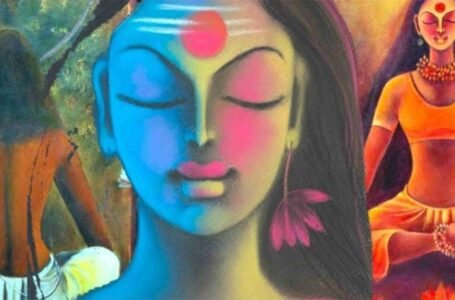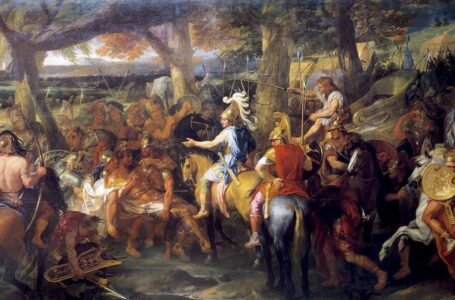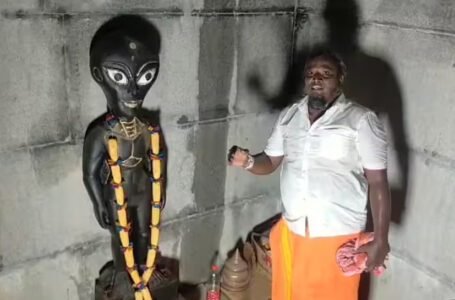Kalamkari: The Timeless Art of Storytelling Through Fabrics
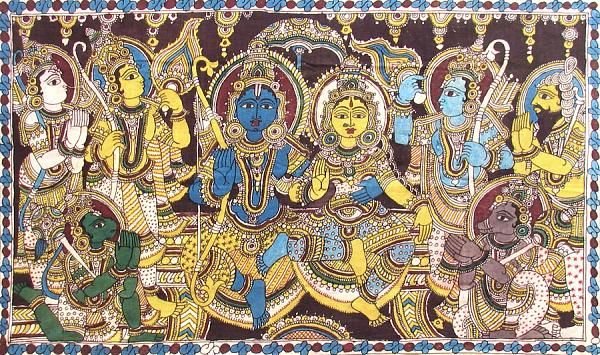
It is most definitely not an exaggeration to say that the Indian art forms that we see now, have existed, and evolved not just 100s of years ago but actually thousands of years ago. Their roots within the Indian art culture and tradition are in fact that deep. One of these art forms are the kalamkari painting style that is said to have originated in Andhra Pradesh. Being a textile printing art form, not only is it distinct, it is also extremely likes and appreciated within and outside the Indian art scene.

History
Said to be almost 3000 years old, Kalamkari originated in a place in the southern part of India, currently known as Andhra Pradesh. When the Harapan civilisation was getting excavated, art piece of kalamkari style being discovered also help substantiate its ancient existence. The word Kalam implies ‘pen’ and Kari means ‘art’ a lot of people believe that the artform received its name from the Mughals when they discovered the art during their reign over the Deccan region. The word “Kalamkari” originated from the title “Qualamkars,” which the Mughals, who supported this craft in the provinces of Coromandel and Golconda, gave to its practitioners.
It was first used to depict scenes from sacred texts including the Bhagavatam, Ramayana, and Mahabharata. These murals, which told the stories of the gods, were frequently used as ornamental backgrounds in temples. Chitrakars, who were painters, kept moving villages in order to increase the knowledge of locals in Hindu mythology and also perhaps to influence them. Large pieces of canvas produced on the spot using basic tools and plant-based dyes were used to depict their stories.

Types
The two most well-known styles in the kalamkari art style are Srikalahasti and Masulipatnam Kalamkari. While they both celebrate the intricacy of hand-painted fabrics, they both have unique characteristics and narratives.
Srikalahasti
This style has its roots in Andhra Pradesh’s temple town of Srikalahasti and embraces a long tradition of storytelling via vibrant colours and intricate motifs. The Srikalahasti Kalamkari focuses on freehand drawing with a bamboo pen, reflecting themes inspired by Hindu mythology, particularly scenes from epics like the Ramayana and the Mahabharata. Religious themes and mythological imagery are well-known features of these particular kalamkari paintings. Currently we see them often being used as saree embellishments.

Machilipatnam
Machilipatnam Kalamkari is the second, popular type of kalamkari. It embodies a more secular style and combines the creativity of its artists with more historical narratives. There is a clear Persian influence with excessive use of floral motifs inspired from the seashore village of Machilipatnam. While srikalahasti is pure handmade pen work, this style is different because predesigned wooden blocks are also often used while painting the piece of work.
23 steps
There are obvious reasons why this artform is revered to such a high status when it comes to Indian art forms. A lot of work goes behind preparing to make one of these and it is also very time consuming. A kalamkari artwork often requires around 23 steps to go from scratch to its final outcome. The first step in the procedure is bleaching the fabric to be painted on, the follows softening and drying it fabric before moving onto seeking the colours to be used through natural dyes. After that, it is hand-painted with a tamarind pen, allowed to air dry, and finally cleaned. It is a meticulous procedure that requires extra care.

A bleach solution plays an important role in giving the fabric a consistent off-white colour, it is left in the solution for a few hours. To prevent the dyes that will later be used on it from smearing, the cloth is next soaked in a concoction of buffalo milk and Myrobalans. After that, buffalo milk is removed from the fabric by washing it with a lot of effort. the fabric is washed again for the other twenty times and then sun-dried. At last, the fabric gets ready for the painting. Diverse designs and motifs are drawn on the fabric to give it the final touch.
The Kalams used to draw onto the cloth are also to be prepared with care. Cloth is wound around a bamboo, over which wool is tied. On one end, the bamboo is given a thin and sharp tip. The sketches are drawn with charcoal made from burnt tamarind twigs, and then once again drawn over with the kalam. The artform requires creativity and imagination on the artists part as well because they are usually free hand painted designs.
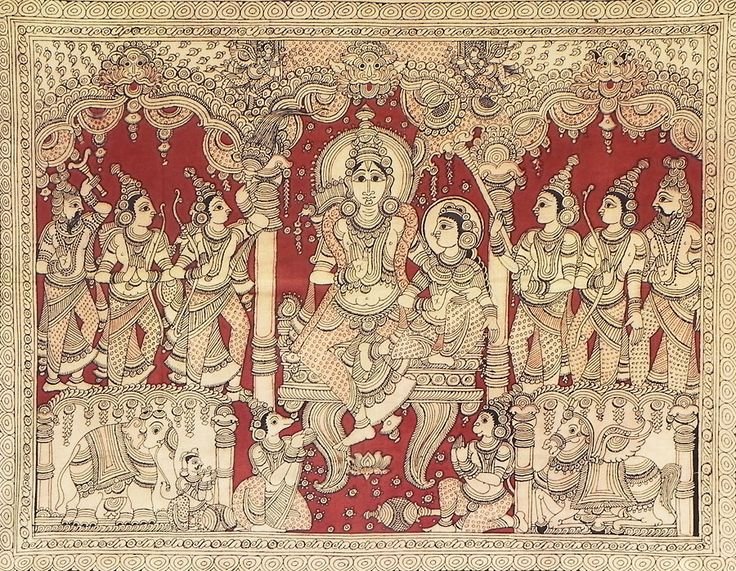
Motifs
Nature, mythology, and spirituality serve as the inspiration for the many symbolic and decorative elements seen in Kalamkari paintings. When looking at several paintings one can start to notice that there are certain elements the keep recurring in these painting, which also provide a sense of cohesiveness to these artworks. Intricate floral designs, such as lotus blossoms and creepers, which represent growth and purity, are frequently used motifs.
Cultural and religious significance is reflected in the many depictions of animals including cows, peacocks, and elephants. The main topics include mythological characters, such as Hindu epic gods and goddesses, who are frequently depicted in narrative scenes. In order to link the art to religious traditions, temple themes like pillars and chariots are very frequently featured. To further improve its aesthetic appeal and cultural relevance, Kalamkari also uses geometric patterns, abstract patterns, and ornamental borders.
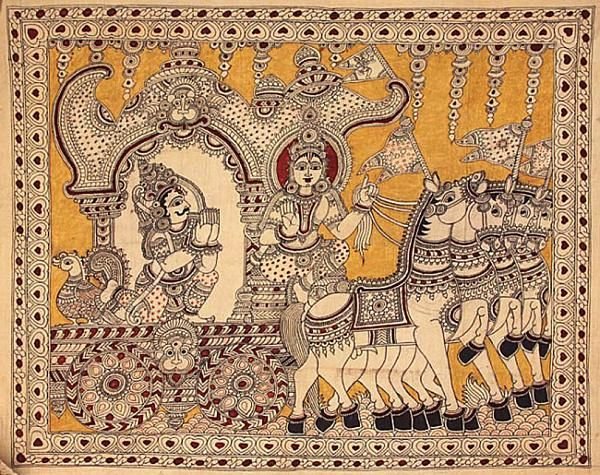
Current situation
While there is a lot of appreciation that this form continues to receive, there has been a decline in artisans pursuing this art form full time. Hand painted works have somewhat been replaced by block prints as an attempt to compete with the mass-produced artworks made by machines. By supporting traditional art forms like Kalamkari, we can ensure that this cultural treasure continues to flourish for generations to come.

Conclusion
Kalamkari can be seen to have transcended time and remained an art form that continues to catch curious glances from people. It is rich in its true essence. Through the delicate use of natural colours along with use traditional techniques, kalamkari continues to embody eco-friendly and sustainable art practices. Its enduring legacy lies in its ability to adapt to contemporary aesthetics while preserving traditional values, inspiring global appreciation for Indian artistry
